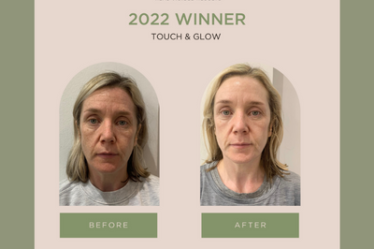
Hyperpigmentation 101: A 3-Step Expert Guide to Prevention & Treatment
- Michelle Macken, National Trainer for Ultraceuticals, shares her 3-step approach to tackling hyperpigmentation, from sun spots to acne scars.
Uneven skin tone, blotchiness, dark spots and freckles are all examples of unwanted skin pigmentation – a.k.a hyperpigmentation – affecting many people across Ireland, particularly this time of year.
“Hyperpigmentation is a common skin concern we can be challenged with all year round but in particular after the sunny summer months,” explains Michelle Macken, National Trainer for Ultraceuticals, Australia’s leading cosmeceutical-grade skincare brand.
But what is hyperpigmentation, and how can we manage it? We spoke to Michelle to get her go-to 3-step approach to prevent and treat the most common pigmentation conditions, from sun spots to acne scars and everything in between.
1.Understand Your Triggers
According to Michelle, knowing and understanding your skin triggers is the first step in preventing and managing hyperpigmentation. Skin triggers can be internal or external factors. They include UV light and sun exposure, certain medications, hormonal changes, such as during pregnancy, and injury to the skin – for example, post-acne scarring.
“Wearing a broad-spectrum SPF is the number one prevention method,” says Michelle. “I recommend wearing the Ultra UV Protective Moisturiser SPF 30 or SPF 50. Apply a generous amount to clean, dry skin 20 minutes before sun exposure and again after swimming, exercising or towelling and reapply every 2 hours.”
Hyperpigmentation can also occur after a trauma or injury to the skin; a typical example is post-acne scarring: “You may notice some darkness or discolouration on old acne lesions. It may appear pinky-red or blue-brown – depending on your genetic pigmentation.”
Michelle’s top tip is never to pick your spots. Instead, she advises to “opt for a localised spot cream to treat your breakout such as the Ultra Clear Spot Complex; this can be used on the spot up to 3 times a day.”
2. Choose the Right Skincare
When treating hyperpigmentation at home, Michelle says you need to tackle the concern with a synergy of brightening skincare products.
Michelle advises upgrading your cleanser to one formulated to treat hyperpigmentation, such as the Ultra Brightening Foaming Cleanser. Next, she recommends applying a targeted treatment serum. “I’d recommend the Ultra Brightening Serum. This corrective serum has a remarkable formula developed specifically to improve the appearance of mild-excess pigmentation visibly.”
Swap your usual moisturiser for a treatment moisturiser. Michelle’s top pick is the Ultra Brightening Moisturiser Cream, “it’s a nourishing moisturiser that helps to enhance skin’s brightness, clarity and luminosity.”
3.Boost Results with Professional Treatments
Finally, Michelle says a synergy of home care and professional treatments is recommended to help achieve your skin goals.
“If you are concerned about dull, blotchy and uneven skin tone, I highly recommend a course of the Ultracueticals Radiance and Glow Facial Treatment,” says Michelle. “This features the Ultra Brightening Accelerator Mask with a cocktail of tried and tested ingredients to deliver a more even and smooth skin tone.”
Ultra Brightening Foaming Cleanser: €44.00
Ultra Brightening Serum: €105.00
Ultra Brightening Moisturiser Cream: €61.00
Ultra Cleat Spot Complex: €29.00
Ultra UV Protective Daily Moisturiser SPF50 Hydrating: €52.00
Ultraceuticals is available from leading clinics nationwide and online at ultraceuticals.com/ie/. To find an Ultra Clinic near you: ultraceuticals.com/ie/store-locator



